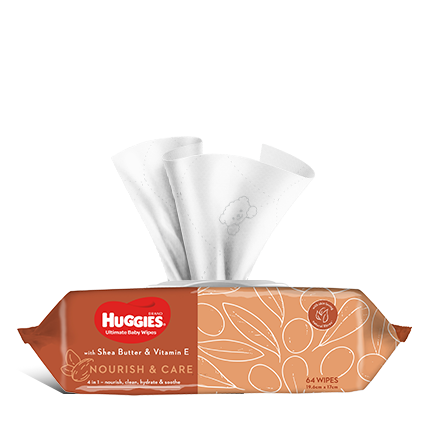If it seems to you that there are more children with food allergies around, you are right. Both allergies in general and food allergies in particular are on the rise worldwide. Theories as to why this is so include increased immune challenges from toxins and genetics.
Is a milk allergy the same as lactose intolerance? What are the main allergy-forming foods? What can my allergic child eat? Regularly asked these sorts of questions, nutritionist mum Leanne Cooper explores this complex area and addresses some of the common questions from mums and dads.
Don t confuse food intolerance with food allergy
Often the terms allergy and intolerance are used interchangeably. Be aware that self-diagnosing can be risky, as not all reactions to food are what they seem. In fact, allergy and intolerance are different. A food allergy is defined as an immune response (involving special immune substances such as antibodies called IgE) by the body to a food protein or similar large molecule. Definitions of food intolerance are a little less clear. Some consider it a chemical reaction not involving the immune system; others refer to it as a non-IgE immune response. For our purposes it is easier to think of it as a non-immune response where the body is unable to deal with a food compound. One of the best-known examples is the reaction many people have to the taste enhancer, MSG. Food intolerances are by far much more common than food allergies.
When we experience an allergy, the body reacts to seemingly harmless substances by treating them as foreign invaders, so the body's response is to mobilise its army of antibodies which are made by the immune system. This is why allergies (not just food) are best diagnosed by testing the body's antibody response to an allergen. This can be done using a blood test or skin prick test. This is also why many children with undiagnosed allergies can appear overly tired with dark rings under their eyes; their body has its army on the front line battling without rest.
You can read more about food allergies here
What sort of foods cause food intolerances?
Unfortunately, it seems our tastiest foods are most likely to be offenders as they have the greatest levels of natural chemicals. Three major groups include:
- Foods high in salicylates (plant chemicals that are similar to aspirin) such as fruit, vegetables, nuts, herbs and spices and yeasty foods.
- Foods containing amines (part of protein) such as yes I have say it chocolate, cheese, yeasty foods and fish products.
- Glutamate (a protein) containing foods such as tomatoes, cheese, mushrooms, stock cubes, sauces and yeasty foods.
You can read more about food intolerances here
What are the chances of my little one being affected by food allergy?
“Prevalence rates of admissions for food-induced anaphylaxis in Australia increased 350% between 1994 and 2005. Rates of increase were greater for children less than 4 years of age (Lack, 2012)
Global population data tells us that food allergy affects about 1-2% of people, though the exact figure is not clear (Lack, 2012). Certainly, trends show that allergy rates have grown in the past few decades in most Western countries. A study conducted in Australia in 2011 found that 3% of bubs under 12 months of age experienced peanut allergy, almost 9% experienced egg allergy and less than 1% sesame allergy (Lack, 2012). In the US, when averaged out the figures were 0.4% for milk, 0.2% for egg, and 1.3% for peanut. Another study found that rates of allergy to peanut in Singaporeans and Filipinos was around 0.5% but for expatriates from the US and Canada living there it was higher (1.2%) (Lack, 2012). Interestingly, Israel has a low rate of peanut allergy of 0.04%, thought to be due to the early exposure of peanuts (Allan et al, 2008). So you can see geography appears to matter, though potentially it has more to do with feeding practices.
A family history certainly seems to have some predictive quality to allergy in children, however it is most evident when both parents have a history of food allergy, and while the association is less strong when just one parent has a food allergy it is stronger if it's mum. It should be said that these statistics aren t cut and dried; many factors influence them including ethnicity and which food is the allergen(Koplin, 2013).
In Australia and NZ, around 2% of bubs are allergic to cows milk and dairy; that's about 1 in 50 babies. Most bubs will grow out of this allergy before school; some unfortunately don t. Of course, many parents turn to soy-based formula as an option, but keep in mind that around 50-80% of little ones with CMP allergy can cope with soy (so 20-50% of children will also react to soy-based formula).
What are the main culprits?
According to the NSW Food Authority (2013), the top food allergens include:
- Crustaceans
- Eggs
- Fish
- Milk
- Peanuts
- Soybeans
- Tree nuts
- Sesame seeds
Agencies in Australia and NZ now require these as well as gluten and sulphites (compounds added to food such as processed meat and dried fruit as a preservative) to be listed on food labels.
This information has been provided by Leanne Cooper Director of Cadence Health and Food Coaching Courses, Leanne is a registered nutritionist and mother of two very active boys.
This fact sheet may be reproduced in whole or in part for education and non-profit purposes with acknowledgement of the source. It may not be reproduced for commercial use or sale.
The information presented is not intended to replace medical advice.
Last Published* May, 2024
*Please note that the published date may not be the same as the date that the content was created and that information above may have changed since.




















